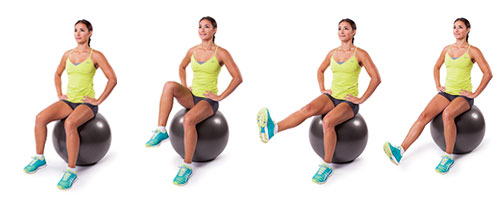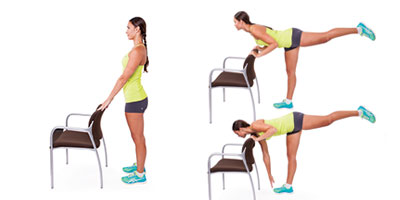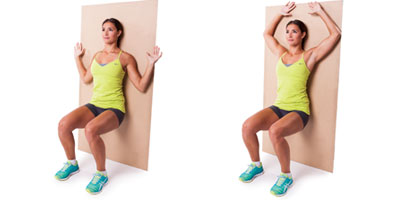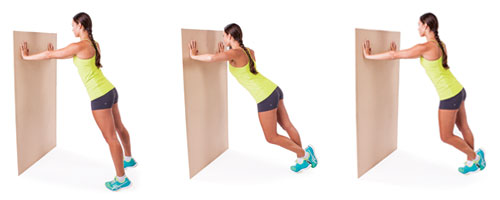
Maintaining our balance becomes even more important to avoid falls as we get older. These exercises will help you stay mobile and on your feet.
Moving through each phase of life, our body strictly adheres to the “use it or lose it” principle. As we age, our balance can deteriorate due to many factors, but with regular training we can maintain a “balanced” lifestyle.
Maintain mobility
The aging process is associated with the greying of hair, the wrinkling of skin, and other superficial badges of honour. Sadly, also associated with aging is the deterioration of senses, fragility of muscles and bones, and the loss of coordination, balance, and stability. While wrinkles and loose skin may be unavoidable, there is significant evidence showing that mobility and balance can not only be maintained, but also improved upon in later years.
Upsetting the balance
While regular exercise and resistance training can slow the effects of aging, we can’t expect to avoid all complications. An inability to control our balance could be due to being a couch potato, or it could be caused by a medical condition called balance disorder. A balance disorder makes you feel unsteady or dizzy, even though you’re standing still or lying down.
Our sense of balance is associated with the structure and components of our inner ear. Sometimes balance problems can be triggered by
- infections such as labyrinthitis
- nerve inflammation such as vestibular neuronitis
- change in fluid volume such as Ménière’s disease
- leaking of inner ear fluid into the middle ear such as perilymph fistula
If you notice dizziness or prolonged balance issues, visit your health care practitioner (but maybe have someone else drive you there).
Diminished bone density, softened muscle tone, and worn joints and tendons are a fact of life. That is why maintenance of balance and stability is so crucial, because, let’s face it, you don’t bounce like you used to. While a fall in your younger years may have resulted in a bruised body and ego, a fall in your senior years could equal a trip to the hospital for a broken bone.
The answer? Don’t fall in the first place by training your core to be stable and your joints to be balanced and supported. Classes such as yoga, step, dance, or tai chi have been shown to improve balance in middle-aged individuals. A major factor in the severity of falls is a lack of flexibility, so be sure to stretch daily.
Perform the following exercises to both test and improve your balance.
Stability Ball Seated Knee Tucks

Perform: 3 sets of 12 repetitions per leg
- Choose a stability ball of an appropriate size; that is, when you sit on top of the ball, your knees and hips should both make angles slightly greater than 90 degrees.
- Put your hands on your hips and straighten your spine, sitting as tall as possible.
- Actively pull in your tummy toward your spine (suck that gut in!) and squeeze your abs like someone is about to punch you in the stomach.
- While maintaining the angle at your knees, slowly raise your right knee as high as you can, straight up in the air, for more than 3 seconds.
- Be conscious not to lean, twist, or tilt your hips or upper body to either side.
- When you can no longer bring your knee any higher, slowly lower it at the same pace.
- Repeat with your left knee.
To make this exercise more difficult: Try performing with a straight leg.
Bobbing for Apples

Perform: 3 sets of 12 repetitions per leg
- Stand facing the back of a chair with hands on top of the chair back and arms outstretched in front of you. Hands should be roughly at belly button height.
- Keep one leg on the ground.
- Imagine that your body is a single unit from your shoulders to the ankle of your other foot. Raise this leg behind you as you lower your upper body parallel to your arms.
- Keep the top of your head through your hips, knee, and ankle in a straight line as you bend at the hips.
- Inhale as you bend forward, taking about 3 seconds to come to the final position. While ensuring both legs stay straight, exhale and return to starting position using the same pace.
To make this exercise more difficult: Take the hand that corresponds to the leg on the ground and try to touch the floor during each repetition.
Seated Wall Angels

Perform: 3 sets of 10 repetitions
- Stand with your back leaning against a wall.
- With your tailbone, lower back, shoulders, and the back of your head in contact with the wall, slowly walk your feet forward, sliding down until your knees are at a slightly greater angle than 90 degrees.
- Feet should be hip-width apart and toes should be pointed forward.
- Without any other parts of your body breaking contact with the wall, bring your arms up against the wall so that the backs of your shoulders, elbows, and hands are against the wall (as if you are waving hello to someone).
- Over a 4-second period, exhale and slide your hands upward, making your arms as straight as possible overhead (you likely won’t be able to straighten them—that’s okay).
- Only go as far as you can without breaking any contact points with the wall.
- Inhale and lower at the same pace.
To make this exercise more difficult: This one is hard enough as it is!
Wall Push-Ups with Stacked and Staggered Feet

Perform: 3 sets of 10 repetitions per leg
- Stand about 3 to 4 ft (1 to 1.2 m) from a wall, facing it with feet hip-width apart and hands just wider than shoulder width and palms against the wall.
- Without changing hand positioning, take your left foot and position it behind your right ankle.
- Keep your core engaged and your body in a straight line from neck through ankle.
- Inhale as you lower your face toward the wall over a 3-second period.
- When your face comes to within 2 in (5 cm) of the wall, exhale and push yourself away from the wall and back to straight arm starting position.
- Take special care not to allow your hips, ankles, or toes to twist or shift. If they do and you can’t stop them, move your feet closer to the wall.
To make this exercise more difficult (once you get the hang of it): Increase the distance between your feet and the wall.



































